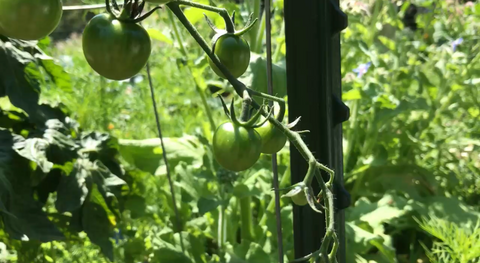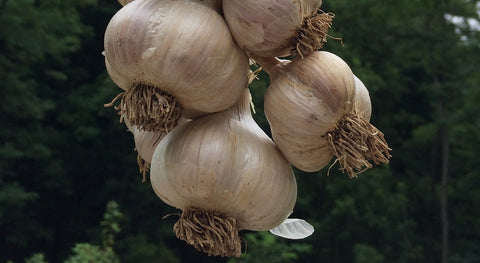The Basics of Growing Organic Vegetables at Home
Growing organic vegetables at home has many benefits for your lifestyle and health. One small herb or vegetable garden can provide greens for your dinner salads and flavorful ingredients to spice up your entrees. Some of my personal favorite garden food varieties are corn, red onions, squash, romaine lettuce, broccoli, beans, parsley, carrots and heirloom tomatoes. Organic herbs and vegetables add freshness to every meal and contribute to a healthy diet. They are simply delectable. It’s a good thing that growing them isn’t as hard as it is made out to be. In fact, most vegetables and herbs are easy to grow! You could say the hardest part is waiting for your harvest! All you need to grow your own herbs and vegetables is a well-designed garden and some basic knowledge of a few variables such as sunlight, spacing, soil and watering. Below is a list of things to look out for when starting and maintaining your vegetable garden using some organic methods. You will discover that growing your own organic vegetables is easy, enjoyable and surprisingly satisfying—especially at harvest time!
But first, here are some pictures of some of the organically-grown vegetables in my dad's garden. Nice work, dad.


Sunlight
When choosing the location of your garden, whether it’s a raised box or in-ground vegetable garden, the location is key because of one reason: sunlight. Most vegetables require an average of 4-8 hours of direct sunlight per day. And while most will tolerate more, it is best not to undershoot. Plants that are deprived of sunlight will grow up weak and return low yields. Try to place your garden in an open area free from shade. Also, look into the varieties that interest you and find out what their sunlight requirements are so that you can plan accordingly. Fruit-producing plants such as tomatoes, peppers, eggplant and squash generally need more sunlight. However, be cautious about how much sunlight you expose them to as it can get too hot at times in certain regions (in Arizona especially). you do find that a certain part of your garden is getting too much sun, there are multiple options to mitigate this -- installing a shade cloth, misters, or even planting taller sun-loving plants adjacent so these tall plants can cast some shade on the space. Leaf and root vegetables such as lettuce, peas, carrots, onions, kale and Swiss chard are on the lower end of the sunlight requirements. Keep this mind as it comes in handy when planning out the location of your taller plants that will shade other smaller ones around it.
Soil
There are three main types of soil—sandy soil, silt soil and clay soil. Their main differences relate to the size of the grains of sand, how well they retain water, their nutrients, their temperature, their porosity and how well they drain water. Though most soil is a combination of these types, you generally want to stay away from using your region’s soil if it falls strictly into one those types. A mix of these types, commonly known as loam soil, is optimal. Be sure to aerate the soil to a depth of 6-12 inches when tilling. For example, in Arizona you would want to till to a depth of 12 inches because of how thick the caliche layers are (unless you are starting a raised bed garden). You also want to make sure you keep about 2 inches of rich topsoil at all times (compost is a great choice for this). In a nutshell, compost is decaying organic matter. Using compost as topsoil for your garden also organically fertilizes your garden! It is especially helpful for those who live in regions with poor soil; the compost offsets any heterogeneous deficiency (i.e. the soil falls heavily into one type of soil). Common ingredients for compost include cardboard, coffee grounds, egg shells, leaves, wood shavings, vegetable plant remains, cow and horse manure, tea bags, fruit and vegetable scarps, and grass clippings. There are however, some things you should not compost: fish, meat, weeds and diseased plants, coal ash. Generally speaking, if it smells bad you should revisit what you have been mixing in your compost.
Watering
Properly watering your plants is another crucial element to successfully growing herbs and vegetables. As a general rule of thumb, you want to make sure the soil is moist at 1 inch below the surface. This means that you may have to water a couple times a day in hot regions. A good technique for keeping your soil moist is by using mulch. Some of the most commonly used organic mulches are wood chips and grass clippings. Simply place the mulch around the base of your plants to help conserve moisture in the soil. Stay on top of watering because thirsty plants are weaker and more vulnerable to disease! Automatic drip systems are highly recommended because they don’t under or overwater your plants. Automatic drip systems save you time and money!
Spacing
Spacing your plants properly is important because it helps plants achieve your full-growth potential. Plants that grow up in ample space with sufficient nutrients produce bigger, tastier harvests. The amount of space that a plant needs to grow in is dictated by the size of the plant (more or less). Pretty simple right? For example, 2 or 3 may be the most zucchini or tomato plants you can plant in one square foot, but you are able to plant up to 16 carrots in one square foot! Giving plants ample space to grow is also important because it prevents competition for nutrients, thus allowing a smaller number of plants to grow bigger than a large number of plants cramped into a small space. To put numbers to it, 10 tomato plants in a 2’ by 5’ garden will produce a bigger yield than 20 tomato plants in that same garden. Plant-specific spacing recommendations are usually on the back of your seed packets. To learn more about proper spacing, check out the Square Foot Gardening technique and what John Chapman was to say about it (you can search for this on Google). This semi-advanced method of gardening capitalizes on the benefits that proper spacing can bring.